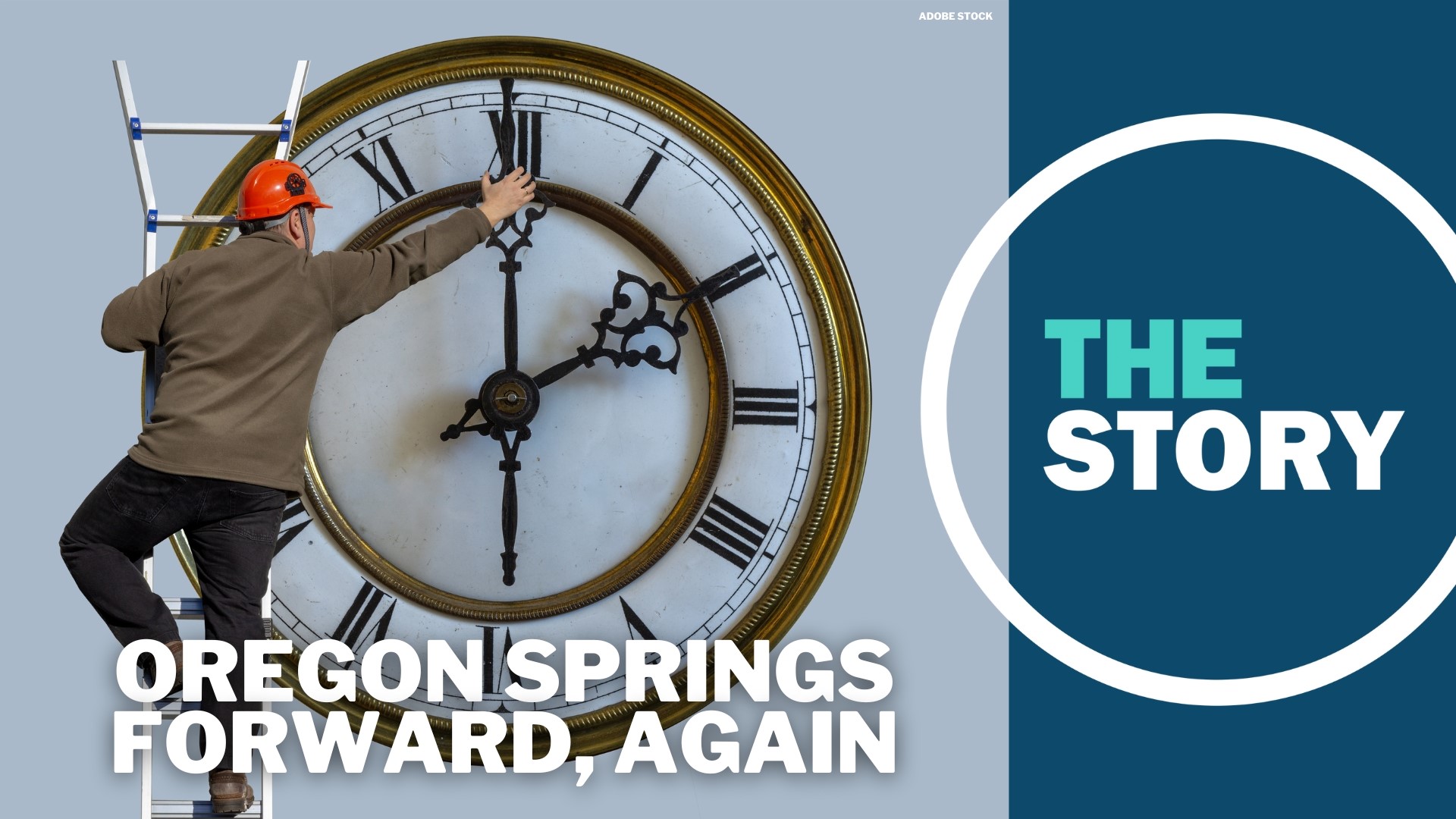SALEM, Ore. — This weekend, Oregonians sprang forward once more. Despite the characteristic gloom of a Pacific Northwest Monday in March, the change to daylight saving time should make for a perceptible change in how late the sun sets.
Across the U.S. (with the exception of some areas like Hawaii and Arizona), these time changes happen twice a year, every year, despite the fact that most people resent the practice.
KGW ran an informal poll during its Sunrise shows on Monday, and viewers responded overwhelmingly that they weren't fans of changing clocks. A more scientific poll from YouGov found that 62% of Americans surveyed are done with it. Only 21% wanted to keep it.
But there remains some confusion about whether to keep daylight saving time year round, making for more sunlight in the evenings; or standard time, which would mean more sunlight in the mornings. In the Pacific Northwest, that can make for a pretty substantial difference.
Keeping daylight saving time would mean that the sun wouldn't come up until almost 9 a.m. in January, but there would be more sunlight in the afternoons — fewer sunsets before 5 o'clock.
Staying on standard time, which is what we currently have during the winter, would mean that the sun would come up very early in the summer, around 4:30 a.m., and it would go down earlier instead of sticking around until 9 p.m.
The same YouGov poll found that people prefer later sunrises and sunsets. About half of Americans want to stay on permanent daylight saving time instead of standard time.
That tends to be what lawmakers have pushed for as well. Last year, the U.S. Senate unanimously passed the "Sunshine Protection Act," which would put the U.S. on permanent daylight saving time. However, the bill stalled in the House.
U.S. Sen. Marco Rubio of Florida has introduced the bill again this year. Oregon's U.S. Sen. Ron Wyden is a co-sponsor, as is U.S. Sen. Patty Murray of Washington.
Daylight saving never sets in the U.S.
You may be asking yourself, "Didn't Oregon already vote on this?" Well yes. Yes it did, and so did Washington. And yet here we are again.
So why are we still changing the clocks, and how did we get here?
Going way back to the beginning, Congress passed the "Uniform Time Act" in 1966, establishing the daylight saving time change nationwide. Oregon was already on board, having done the same four years prior.
The idea was to turn clocks forward one hour on the last Sunday in April, then turn them back the last Sunday in October. It was designed to help people make better use of the daylight as the sun rises and sets later and later throughout the summer. The official time change did, and still does, happen at 2 a.m., when most folks are asleep.
In 2005, Congress extended the daylight saving time window, scheduling us to spring forward in March and fall back in November.
Plenty of people find the frequent time shifts irritating, and some states, like Arizona, don't observe daylight saving time at all.
In 2019, Oregon and Washington decided to take a page out of Arizona's book by eliminating the time change, but lawmakers instead passed a bill to keep both states on the daylight saving time schedule year-round — in other words, the summer schedule would also be in effect for the winter.
California has been a bit in limbo, even though the original goal was for all three West Coast states to change together. California voters passed a proposition in 2018 giving the state legislature the power to make daylight saving time permanent, but then the legislature sat on the issue.
As adopted, Oregon's bill actually relies on both Washington and California signing on before making the switch.
Regardless, a state needs approval from Congress and the President to enact a time change like this. As a result, Oregon has been waiting on lawmakers in the nation's capital ever since. And as the fate of last year's bill suggests, political will to make the change has been oddly lopsided — as if most lawmakers broadly agree, but don't particularly care.
To complicate matters further, most of the political will has sided with making daylight saving time permanent over standard time. And while growing research suggests that the time changes aren't good for our health, some researchers also argue that permanent standard time would be preferable over permanent daylight saving time for similar reasons, since it most closely approximates the human body's natural rhythms.

